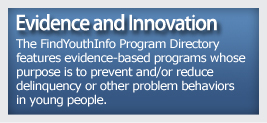Youth Health and Safety at Work
The rates of injury for young workers are high. The Centers for Disease Control and Prevention (CDC) suggest that every nine minutes a young person gets hurt while on the job (2011a). In 2009, 359 workers under the age of 24 died from work-related injuries. Of that number, 27 youth under the age of 18 died. Over a ten-year period (1998 to 2007), the average number of young workers treated in U.S. hospital injury departments annually for nonfatal injuries was 795,000, and the rate for emergency department-treated occupational injuries for young workers was approximately two times higher than among workers 25 years and older.
While regulations restrict youth from participating in a range of hazardous jobs and limit the hours that youth can work, there are still many hazards that youth can face in the workplace. The high injury rate may be related to the high frequency of injury hazards in places where youth typically work (e.g., hazards in restaurant settings associated with slippery floors and use of knives and cooking equipment). Inexperience and lack of safety training may also increase injury risks for young workers. And, for the youngest workers, those in middle and high schools, there may be biologic and psychosocial contributors to increased injury rates, such as inadequate fit, strength, and cognitive abilities to operate farm equipment such as tractors (CDC, 2011b).
To ensure youth stay safe on the job it is important that both youth and employers know their rights and responsibilities. This includes ensuring that the environment is safe and that all necessary safety equipment (e.g., safety glasses, ear plugs, and gloves) is provided. It is also important that youth are well trained so that they can do their jobs safely. Training should also extend to all the potential hazards associated with the work that youth will be doing so they can recognize and report unsafe situations (CDC, 2011a).
Centers for Disease Control and Prevention, The National Institute for Occupational Safety and Health. (2011a). Are you a teen worker? Retrieved from http://www.cdc.gov/niosh/docs/2011-184/
Centers for Disease Control and Prevention, The National Institute for Occupational Safety and Health. (2011b). Young worker safety and health. Retrieved from http://www.cdc.gov/niosh/topics/youth/
Resources
Are You a Teen Worker?
This informational booklet is targeted to workers age 13 to 18 in non-farm industries. The booklet provides facts youth need to stay safe and healthy at work. The guide also informs young workers about the jobs they can and cannot do and about permissible work hours as defined under federal child labor laws. The booklet also helps youth recognize common workplace hazards and teaches young people about their rights and responsibilities on non-farm jobs.
Youth@Work: Talking Safety
This curriculum in occupational safety and health can be used in the classroom or other group training sessions. It is designed to teach core health and safety skills and knowledge, and covers basic information relevant to any occupation. The target audience for the curriculum is high school age students; however, much of the material can be used in postsecondary job training environments like apprenticeship programs. The curriculum includes instructions for teachers and a step-by-step guide for presenting the material. The bulk of the curriculum is focused on teaching fundamental principles of occupational safety that young workers can use on their first jobs and carry with them into adulthood.
Occupational Safety & Health Administration: Young Workers
This resource from the Department of Labor provides teens, educators, parents, and employers with information on young worker issues. Details about workers' rights and links to training and other educational tools, including state youth employment laws, may also be found on this site.
Youth Rules!
Youth Rules! is a youth-friendly resource that helps to clarify rules and regulations for youth workers. Information is targeted at teens, parents, teachers, and employers. The site provides information on the hours and jobs youth at different ages can work.
State-based Occupational Health Surveillance Clearinghouse
This clearinghouse developed by the National Institute for Occupational Safety and Health (NIOSH) provides access to State-based occupational health surveillance and related reports. Data and products focused on young workers can be identified by using the search link and terms such as “youth” and “young worker.”
National Children's Center for Rural and Agricultural Health and Safety
This Center strives to enhance the health and safety of all children exposed to hazards associated with agricultural work and rural environments. The Center is funded by HHS/CDC/NIOSH and the Maternal and Child Health Bureau within HHS/Health Resources Services Administration.
Youth Topics
Collaboration Profiles
Feature Articles
Tools & Guides
Programs
Technical Assistance
Websites
Publications
Videos & Podcasts
Data Sources


Announcements

Map My Community is a tool designed specifically to assist you in locating resources in your community to help you build and strengthen your youth program. Get ideas for new partnerships, identify gaps in your community, and learn about resources to avoid duplication of effort.



















